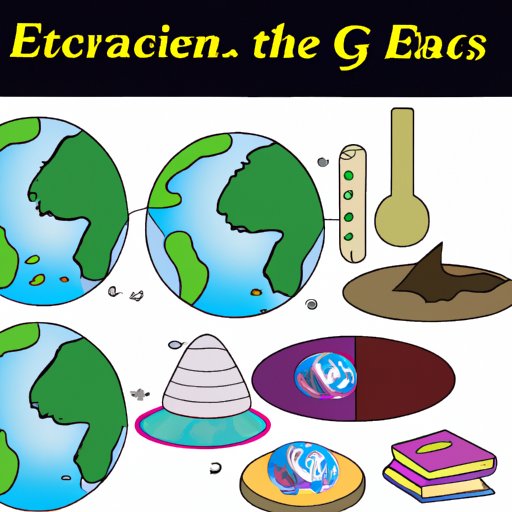Introduction
Earth Science is a broad scientific field that studies the planet we live on. It encompasses many different branches such as geology, oceanography, meteorology, environmental science, and astronomy. Through these disciplines, Earth Science helps us to understand our world, its past, its present, and its future. In this article, we will explore what Earth Science is all about, its various branches and research areas, and the basics of what you need to know.

A Comprehensive Guide to Earth Science and its Applications
Earth Science is a dynamic and ever-evolving field of study. It encompasses a wide variety of topics such as the structure of the Earth, the forces that shape it, the processes that drive its evolution, and the resources that we use. Earth Science also examines how human activities affect the environment, climate change, and resource management. All of these aspects are essential to understanding our planet and our place in it.
Earth Science has several branches that each focus on different aspects of the Earth. Geology is the study of the Earth’s structure, composition, and history. Oceanography focuses on the oceans and their physical and chemical properties, while meteorology studies the atmosphere and its effects on the Earth’s climate. Environmental science looks at the impact of human activities on the environment. Finally, astronomy is the study of outer space and celestial bodies.
In addition to these branches, there are several research areas in Earth Science. These include glaciology, hydrology, geochemistry, seismology, mineralogy, paleontology, and planetary science. Each of these fields contributes to our understanding of the Earth, its history, and its future.
The basics of Earth Science are relatively simple. We must first understand the structure of the Earth, its layers, and its components. We must also understand the major forces that shape the planet, such as plate tectonics and erosion. Finally, we must understand how the Earth’s resources are used and how they can be managed sustainably.
Earth Science: An Overview of its Branches and Research Areas
Geology is the study of the Earth’s structure, composition, and history. It includes the study of rocks, minerals, fossils, and other materials that make up the Earth. Geologists use a variety of techniques such as mapping, drilling, and chemical analysis to study the Earth’s structure and composition. They also study the evolution of the Earth over time and the processes that have shaped it.
Oceanography focuses on the physical and chemical properties of the oceans. It includes the study of ocean currents, waves, tides, and marine life. Oceanographers also study the effects of climate change on the ocean and how human activities can impact the marine environment.
Meteorology is the study of the atmosphere and its effects on the Earth’s climate. Meteorologists examine the circulation patterns of the atmosphere and how they influence weather systems. They also study the effects of air pollution on the atmosphere and climate change.
Environmental Science is the study of how human activities impact the environment. It includes the study of air and water pollution, soil degradation, biodiversity loss, and climate change. Environmental scientists work to develop sustainable solutions to environmental problems.
Astronomy is the study of outer space and celestial bodies. Astronomers use telescopes and other instruments to observe and study stars, galaxies, planets, and other objects in the universe. They also study the formation and evolution of the universe over time.
Conclusion
Earth Science is a fascinating field of study that encompasses many different branches and research areas. It helps us to understand our planet and its history, as well as the forces that shape it. Earth Science also helps us to understand how human activities impact the environment, climate change, and resource management. Studying Earth Science is essential for developing sustainable solutions to environmental problems and ensuring a better future for our planet.
In conclusion, Earth Science is a dynamic and ever-evolving field of study that is essential for understanding our planet and our place in it. Through its various branches and research areas, Earth Science provides valuable insights into the structure and evolution of the Earth, and how human activities can impact the environment. By studying Earth Science, we can gain a greater appreciation for our planet and work towards protecting it for future generations.
(Note: Is this article not meeting your expectations? Do you have knowledge or insights to share? Unlock new opportunities and expand your reach by joining our authors team. Click Registration to join us and share your expertise with our readers.)
